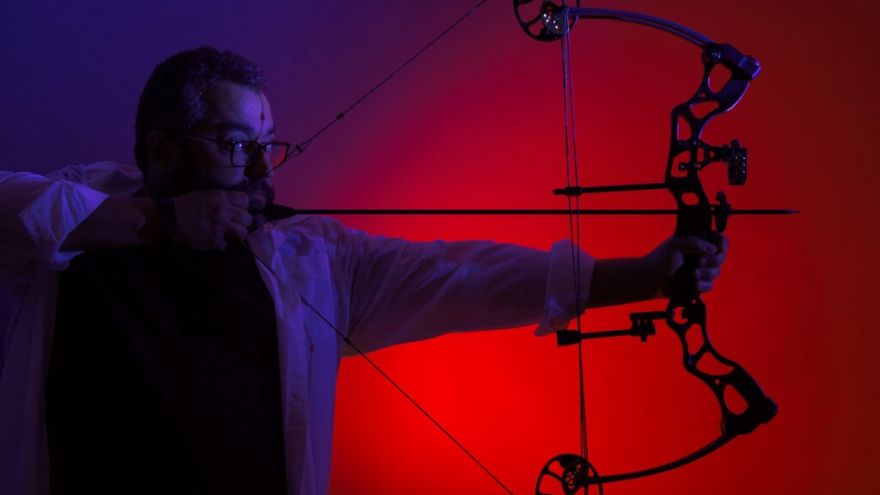Containment vs Drop Away Archery Rests: Which Rest Is Best?
 Containment vs Drop Away Archery Rests: Which Rest Is Best?
thegearhunt.com
Containment vs Drop Away Archery Rests: Which Rest Is Best?
thegearhunt.com
The compound archery world has no shortage of accessories, and arrow rests are no exception. Arrow rests come in many varieties, price points, and features to make the options overwhelming. In general, there are two major types of rests, primarily being containment style rest and drop away style rest.
Each rest has different advantages, disadvantages, features, and price points to help any archer have a successful arrow flight. Whatever your bowhunting pursuit may be, let’s go over these two categories, their subcategories, and which choice will be the best arrow rest for your compound hunting bow.
Containment Arrow Rests
Containment-style rests are very common for new archers because of their ease of setup and price point. These rests generally fall within a price point of $50-125 dollars. Commonly called whisker-biscuits, containment style rests work by resting your arrow within the bristles that come out from the rest.
These full containment rests encircle the arrow and hold it in place while drawing back and coming into a full draw. Then after the arrow is shot, the arrow will fly through the opening in the rest, while the fletchings will pass through the fibers holding the arrow in place. Additionally, should you need to let down in a bowhunting situation, your arrow will stay in place.
Below we have the Trophy Ridge Sure Shot Pro on the left and the Tru Glo Storm capture rest on the right.
Pros
Containment rests are generally the most affordable and easy to set up rests out there; once you’ve installed the rest and done some minor alignment to make sure your arrow is leaving the bow straight, you’re good to go.
These also provide a significant benefit for bowhunters in the sense that your arrow will be held comfortably in place no matter the situation. During a full draw or let down situation, you can have the peace of mind that your arrow will not go anywhere. Some other arrow rests do not do an excellent job of fully capturing your arrow in place and can easily be knocked off, sometimes causing additional noise to spook an animal potentially.
The three contact points rest in black above, holds your arrow in place, and with proper fletching alignment, can assure your fletching will long make contact with the rest as it leaves your bow. Bowhunters also love the containment rests because of no moving parts and their simplicity in operation. With the lack of moving parts and simplicity, full capture arrow rests are reliable and quiet during operation.

Cons
Containment style rests like the whisker biscuit on the left, will contact your fletching as your arrow leaves your string. This can lead to damage of your fletchings over time, and this will ultimately cause poor arrow flight.
This is also a highly debated aspect of the archery world. The consensus is to have as little contact on the arrow as it leaves your bow’s string to ensure a straight and reliable flight path without any impact on your fps (feet per second) or arrow speed.
If you are not going to be shooting long distances, you can likely get away with having a containment-style rest since a poor flight path for an arrow will be magnified over longer-distance shots. Additionally, the three contacts point style rest, like the black arrow rest in the image above, does an excellent job of not contacting your fletching alignment; however, it may require you to stay with certain fletching styles to ensure no contact.
Swapping fletching styles from 3 to 4+ fletchings and different helical or offset types may not allow a three contact containment system to work for your arrow. Different fletching configurations are used to help stabilize an arrow, especially an arrow with large broadheads. The lack of flexibility for fletching configuration can make tuning your broadhead to your bow more difficult with a containment style rest.
Drop Away Arrow Rests
Drop away rests come in many styles. Some with cages for containment, others with blades and no containment for holding the arrow in place. These rests are also referred to as fall-away rests, as the main component holding the arrow up during your shot will drop or fall when your shot completes.

Drop away rests commonly work in two ways. A cable-driven rest will be attached to one of the cables on your bow so that when you draw back, the rest will set itself into position. A limb-driven rest will be attached to a limb on your bow so that when you draw back, and your bow’s limb flexes, it will rest the rest into position.
Cable-driven rests are the most common, and the QAD (quality archery designs) Ultra Rest HDX on the left is an example of that.
Limb-driven rests tend to be more expensive. However, they come with the benefit of not needing a bow press to adjust; the Hamskea Trinity rest in the center is a limb-driven rest that comes in a few variations. Drop away rests tend to be more expensive and can vary anywhere from $100-$250 generally. This can make it a more significant barrier to entry for a new archer purchasing their equipment.
Pros
Drop away rests ensure that when you are at full draw and execute your shot, the only thing in contact with your arrow is the nock to your bowstring as it leaves your bow. This minimizes the number of things that can throw your arrow off course.
Additionally, this means that your fletchings will also not contact your bow, unlike a containment-style rest. The lack of fletching contact also means that you can have more fletching options, vane helicals, van sizes, etc., to try on your arrow. Sometimes a bowhunter will use a larger broadhead, requiring more stabilization from their fletch configuration to keep the arrow flying straight.
A drop-away rest does not interfere with the fletchings on your bow, so you can tune it to shoot better. Finally, drop-away rests can come with containment cages like the Hamskea or QAD above. While the arrow will have more room to move during full draw or let down on a bow, it will not entirely fall off the rest. This containment plus the lack of arrow contact makes a drop-away rest the best of both worlds.

Cons
Drop away rests have more moving parts and require more tinkering to get them set up correctly. Setting up a drop-away rest requires the same alignment process a containment system does, where the rest is aligned to ensure the arrow leaves the bowstring straight. Additionally, the drop-away rest needs to be “timed” to make sure that the rest itself raises and drops away from the arrow at the right time during the shot.
Over time this may require additional adjustment and, unfortunately, may leave you helpless in a hunting scenario if something moves. Additionally, a drop-away rest will have extra cables attached to the bow, therefore having more parts of the bow that can be snagged on debris during a hunt. The arrow will move very quickly during the shot process itself, and the rest will follow suit. It will drop quickly and sometimes loudly when coming down.
Sometimes animals will react to the bow’s sound by what bowhunters call “jumping the string.” The drop-away rest can contribute to that since it will quickly drop and make contact with the bow’s riser. Some of this can be fixed by using felt or rubber as a dampener to quiet the sound, but it will not eliminate it.
In Summary
Bowhunters require a stable, consistent system that produces reliable outcomes. An arrow rest with a solid containment system is a must for any bowhunter, especially when spending time in a tree stand. A containment-style arrow rest is excellent for a new archer entering the bowhunting world with the need for a budget-friendly arrow rest to hunt with.
For a more experienced archer or an archer with more wiggle room in their budget, consider purchasing a drop-away rest to help them have a more stable shooting platform at various ranges and hunting styles. It comes down to personal preference and budget, but each type has some distinct advantages to consider.
While there are a variety of archery products to pick from in the world of arrow rests, if you’re looking at a drop away, strongly consider a QAD Ultrarest HDX because of its highly rated reviews and a strong warranty. Alternatively, if you’re looking at a containment-style rest, the Trophy Ridge Sure Shot Pro is a strong choice.













